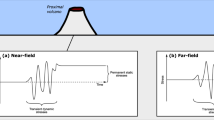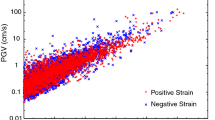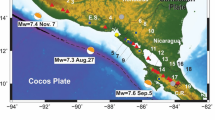Abstract
THE first section of my Outline of a Theory of Earthquakes and Volcanic Eruptions,* which appeared in March 1869, concluded with the words, “At the same time we take advantage of this opportunity to refer to the catastrophe which, according to our theory, must occur on the 30th of September or the 1st of October of this year, and to call the attention of the inhabitants of those countries which are more especially exposed to earthquakes—that is to say, equatorial lands, particularly Peru, the East Indies, &c.—to the danger which threatens them.” I wrote these words under the immediate impression of the results derived from my strict investigation of the earthquakes from 1848 to 1868—an investigation which awakened in me the firm conviction that the influence of the moon upon earthquakes is an incontestable fact. As these results were then known to me only, the prediction referred to must have surprised those scientific men who may consider themselves authorities on this subject. There was nothing peculiar in this. But the remarkable circumstance was that, although before the 1st of October not a single voice was raised against my theory, after that day (which passed in Peru without an earthquake) there appeared in the Cologne Gazette an anonymous article laden with the most vehement abuse of myself. I was able to take it quietly, because I knew I was in the right. For I had nowhere mentioned the localities to be visited by the threatened earthquake so exactly, nowhere defined the limits of it so closely, as the public thought fit to assume. In every passage I made use of the vague expression, “Equatorial countries” adding, by way of example, Peru, Mexico, Equador, the East Indies, &c.; in fact, at present, my theory does not admit of my explaining myself otherwise. People overlooked, or wished to overlook, the fact that in this case stress was laid upon the time and not the place. In the same way the earthquake in the Rhine country on the 2nd October, and the devastating outbreak of the volcano Puraie in Columbia on the 4th October, † were passed over with the most marvellous silence. I comforted myself, however, with the hope that later intelligence would afford me satisfaction, and I was not mistaken. Early in November a telegram announced that a “severe earthquake” had caused great destruction in Manilla; still no date was added, and for a few days I was only able to say that I supposed this earthquake took place on the 1st October. (See “Sirius,” vol. iii. p. 7.) But the Bulletin Hebdomadaire, of the 9th January last, brought the following decisive intelligence of extraordinary importance for the earthquake theory:— “We learn from the Courier of the Philippine Islands that an earthquake took place at Manilla on the 1st October last. It was about half-past eleven in the morning when the first shocks were felt. Then followed the most frightful oscillations which lasted forty-five or fifty seconds, or, according to other observers, even over a minute. These oscillations were regular measured cadences, and violent, like the rocking of a ship in a storm. According to the indications of the pendulum, they were first in the direction S.E.—N.W., later N.E.—S.W. Many persons became sea-sick. The terror of the inhabitants during these anxious moments was fearful. They thought of the earthquake in the year 1863,” &c., &c.
This is a preview of subscription content, access via your institution
Access options
Subscribe to this journal
Receive 51 print issues and online access
$199.00 per year
only $3.90 per issue
Buy this article
- Purchase on Springer Link
- Instant access to full article PDF
Prices may be subject to local taxes which are calculated during checkout
Similar content being viewed by others
Author information
Authors and Affiliations
Rights and permissions
About this article
Cite this article
FALB, R. The Earthquake at Manilla: its Theoretical Significance. Nature 1, 604–605 (1870). https://doi.org/10.1038/001604b0
Issue Date:
DOI: https://doi.org/10.1038/001604b0
Comments
By submitting a comment you agree to abide by our Terms and Community Guidelines. If you find something abusive or that does not comply with our terms or guidelines please flag it as inappropriate.



